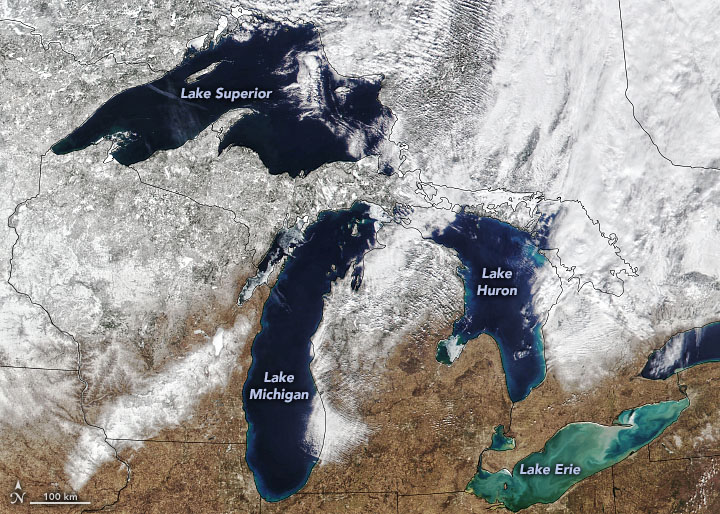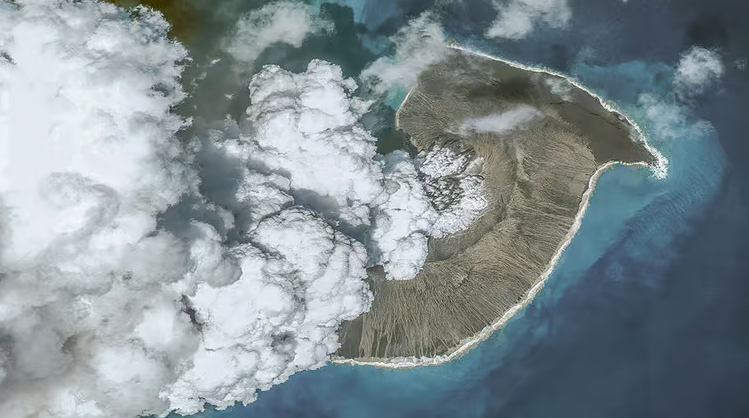The Great Lakes have been unusually ice-free this winter.
As of February 14, 2023, ice covered only 6.6 percent of the five freshwater lakes, which is significantly less than the 35-40 percent ice cover that is typical for mid-February, according to data published by the National Oceanic and Atmospheric Administration’s (NOAA) Great Lakes Environmental Research Laboratory (GLERL).
When the Visible Infrared Imaging Radiometer Suite (VIIRS) on the NOAA-20 satellite acquired this image on February 13, ice cover on the lakes was 7 percent. This is the lowest ice cover measured on this date of any year since 1973, when satellite-based record keeping began. What little ice is present skirts the coastlines of the lakes. A strip of ice can be seen crossing Lake Huron’s Saginaw Bay. In Lake Erie, sediment swirls kicked up by storms give the water a marble-like look.
Air temperatures are the main factor affecting ice cover on the Great Lakes. According to the U.S. National Ice Center, each of the five lakes experienced warmer than average air temperatures in January 2023. The average temperature across the contiguous U.S. was 35.2 degrees Fahrenheit (5.1 degrees above average) according to NOAA, making January 2023 the sixth-warmest January on record.
Ice extent across the Great Lakes Basin briefly jumped to 21 percent in early February in response to a cold snap. But since then, it has declined through at least mid-February. Maximum ice cover typically occurs between mid-February and early March.
Ice cover on the lakes varies from year to year. But an analysis led by Jia Wang, an ice climatologist at NOAA’s GLERL, shows a downward trend spanning 44 years. During the winter period, which runs from December 1 to April 30, average ice cover on the Great Lakes declined 69 percent between 1973 and 2017.
Anthropogenic warming has played a role in this decades-long decline. But a larger factor, Wang has found, is the natural patterns of climate variability over the Pacific and Atlantic oceans: the North Atlantic Oscillation, the Atlantic Multidecadal Oscillation, the Pacific Decadal Oscillation, and the El Niño-Southern Oscillation.
Source: https://earthobservatory.nasa.gov/images/150979/great-lakes-low-on-ice?




